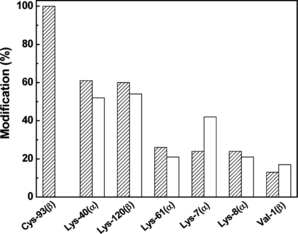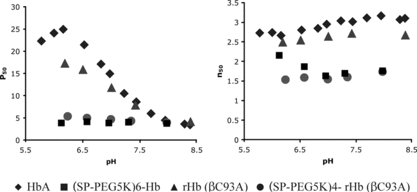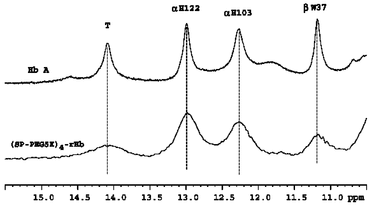Figures & data
Figure 1 Size exclusion chromatographic analysis of PEGylated Hb and rHb(βC93A). The size exclusion chromatography was carried out at room temperature on two HR10/30 Superose 12 columns (Amersham-Pharmacia Biotech) connected in series. The column was eluted at room temperature with PBS, pH 7.4 at a flow rate of 0.5 ml/min, and the effluent was monitored at 540 nm. The chromatography of PEGylated Hb and rHb(βC93A) and P5K4-canine-Hb were shown in a, b and c.
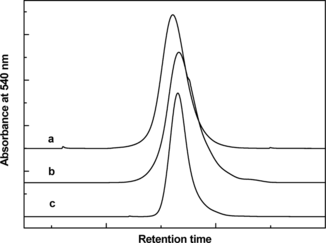
Table 1 Molecular radii of PEGylated proteins
Figure 2 Characterization of PEGylated Hb and rHb(βC93A) by RPHPLC. RPHPLC analysis was carried out on a Vydac C4 column (4.6 × 250 mm), using a linear gradient of 35–50% acetonitrile containing 0.1% TFA in 100 min and then 50–70% acetonitrile containing 0.1% TFA in 30 min. The flow rate was 1 ml/min and the effluent was monitored at 210 nm. The chromatography of HbA and rHb(βC93A) control and PEGylated Hb and rHb(βC93A) were shown in a, b, c and d.
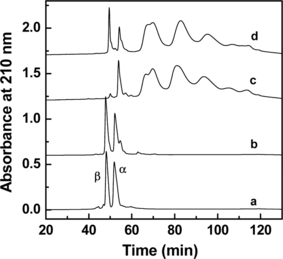
Figure 3 Identification of the sites of PEGylatetion in PEGylated Hb and rHb(βC93A) by tryptic peptide mapping. The tryptic peptides were analyzed using a Vydac C18 column (10 × 250 mm) with a linear gradient of 5–50% acetonitrile containing 0.1% TFA in 160 min, followed by a linear gradient of 50–70% acetonitrile containing 0.1% TFA in 20 min at a flow rate of 1 ml/min and the effluent was monitored at 210 nm. PEGylated Hb and PEGylated rHb(βC93A) are shown in hatched bars and blank bars, respectively.
